分子别名(Synonym)
TNFRSF9,4-1BB,CD137,CDw137,ILA
表达区间及表达系统(Source)
Human 4-1BB, Fc Tag (41B-H5258) is expressed from human 293 cells (HEK293). It contains AA Leu 24 - Gln 186 (Accession # NP_001552.2).
Predicted N-terminus: Leu 24
Request for sequence
蛋白结构(Molecular Characterization)

This protein carries a human IgG1 Fc tag at the C-terminus.
The protein has a calculated MW of 43.4 kDa. The protein migrates as 50-60 kDa when calibrated against Star Ribbon Pre-stained Protein Marker under reducing (R) condition (SDS-PAGE) due to glycosylation.
内毒素(Endotoxin)
Less than 1.0 EU per μg by the LAL method.
纯度(Purity)
>90% as determined by SDS-PAGE.
>90% as determined by SEC-MALS.
制剂(Formulation)
Lyophilized from 0.22 μm filtered solution in Tris with Glycine, Arginine and NaCl, pH7.5 with trehalose as protectant.
Contact us for customized product form or formulation.
重构方法(Reconstitution)
Please see Certificate of Analysis for specific instructions.
For best performance, we strongly recommend you to follow the reconstitution protocol provided in the CoA.
存储(Storage)
For long term storage, the product should be stored at lyophilized state at -20°C or lower.
Please avoid repeated freeze-thaw cycles.
This product is stable after storage at:
- -20°C to -70°C for 12 months in lyophilized state;
- -70°C for 3 months under sterile conditions after reconstitution.
质量管理控制体系(QMS)
电泳(SDS-PAGE)

Human 4-1BB, Fc Tag on SDS-PAGE under reducing (R) condition. The gel was stained with Coomassie Blue. The purity of the protein is greater than 90% (With Star Ribbon Pre-stained Protein Marker).
SEC-MALS
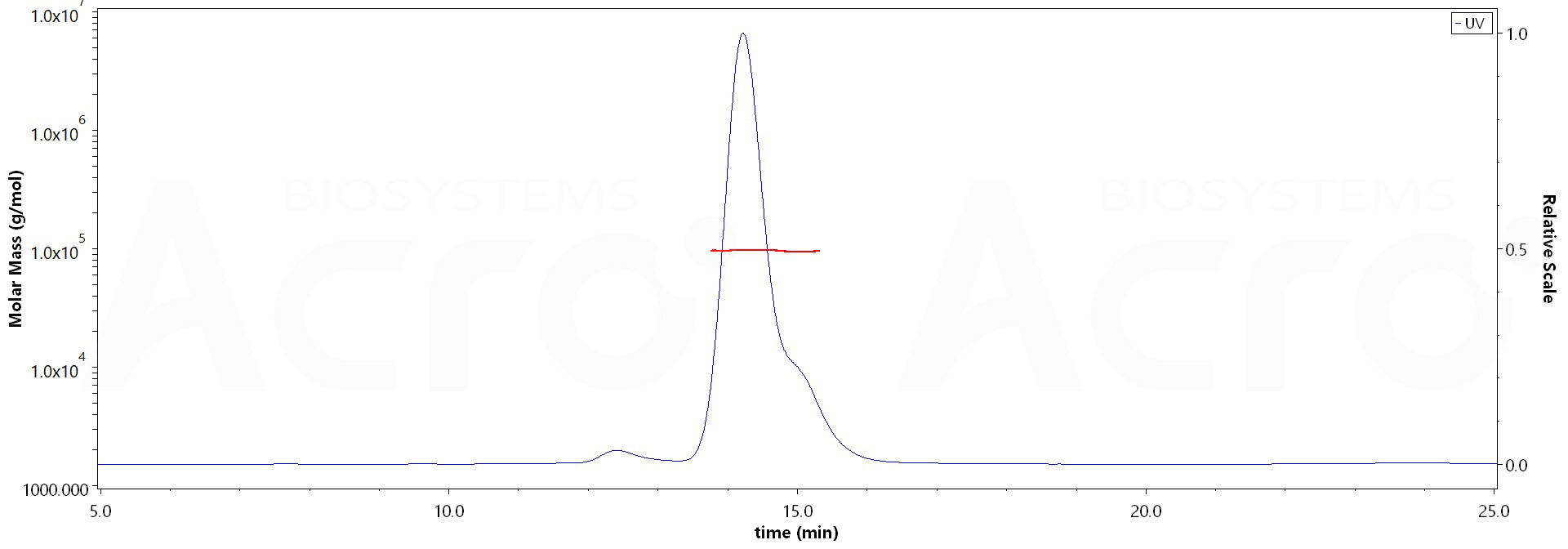
The purity of Human 4-1BB, Fc Tag (Cat. No. 41B-H5258) is more than 90% and the molecular weight of this protein is around 90-110 kDa verified by SEC-MALS.
Report
活性(Bioactivity)-ELISA
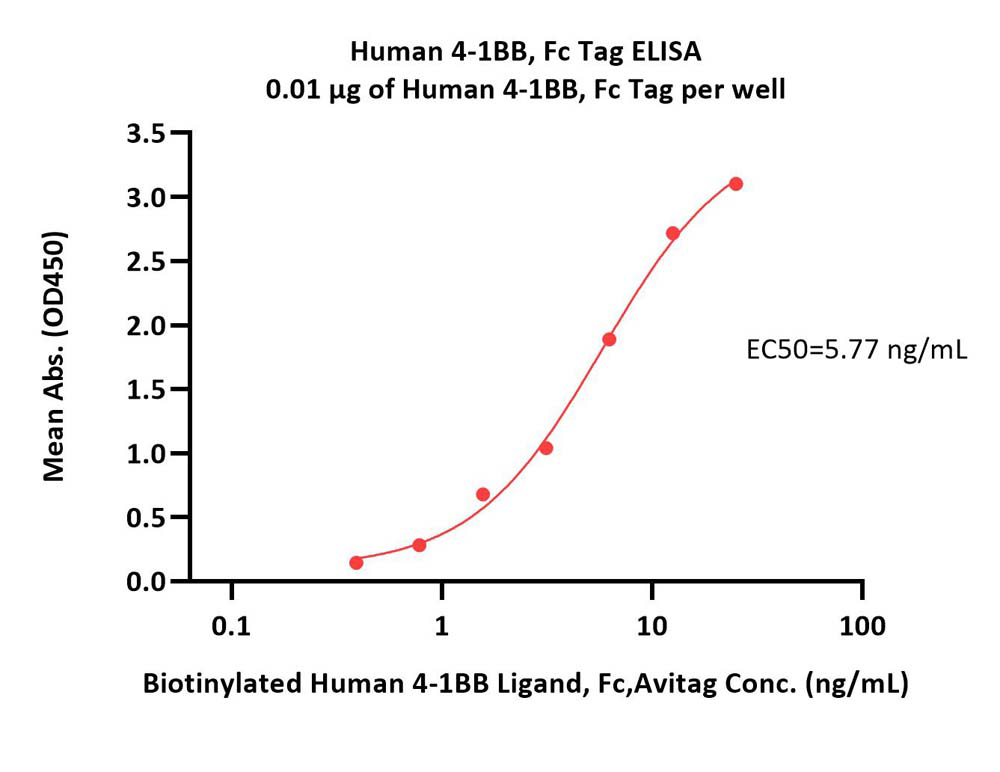
Immobilized Human 4-1BB, Fc Tag (Cat. No. 41B-H5258) at 0.1 μg/mL (100 μL/well) can bind Biotinylated Human 4-1BB Ligand, Fc,Avitag (Cat. No. 41L-H82F9) with a linear range of 0.4-6 ng/mL (QC tested).
Protocol

Immobilized Human 4-1BB, Fc Tag (Cat. No. 41B-H5258) at 1 μg/mL (100 μL/well) can bind Anti-Human 4-1BB MAb, Human IgG4 with a linear range of 0.2-3 ng/mL (Routinely tested).
Protocol
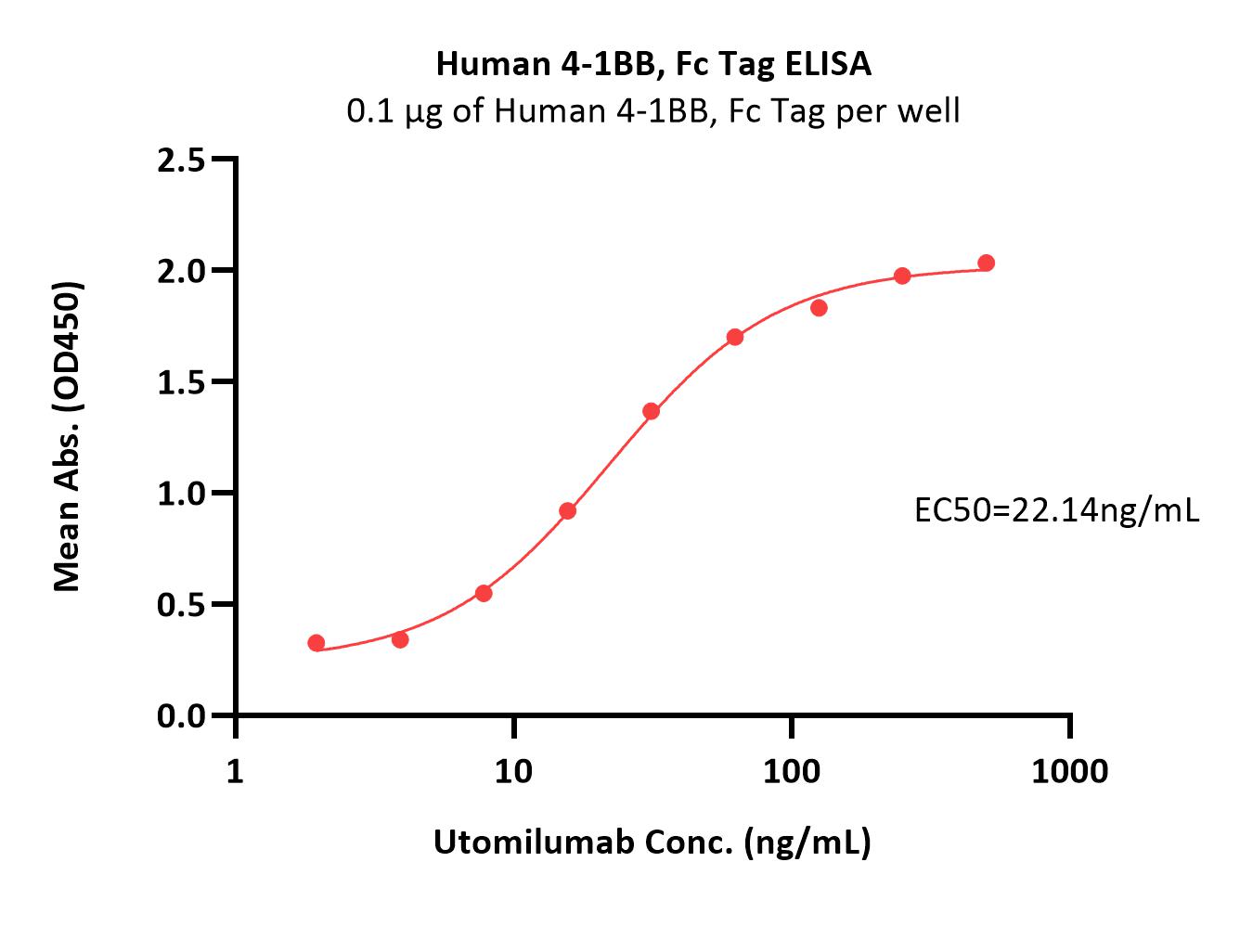
Immobilized Human 4-1BB, Fc Tag (Cat. No. 41B-H5258) at 1 μg/mL (100 μL/well) can bind Utomilumab with a linear range of 2-31 ng/mL (Routinely tested).
Protocol
活性(Bioactivity)-BLI
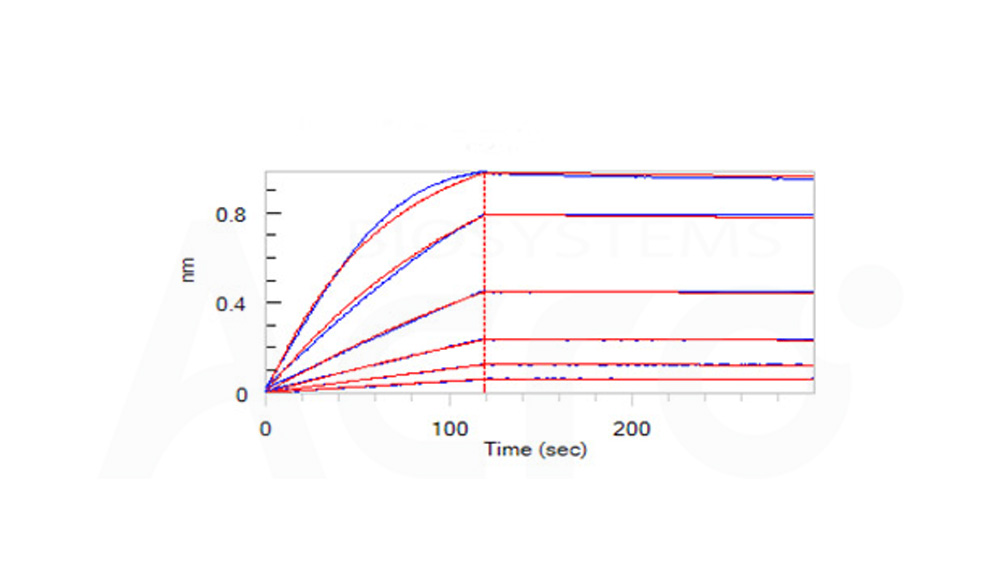
Loaded Human 4-1BB, Fc Tag (Cat. No. 41B-H5258) on Protein A Biosensor, can bind Human 4-1BB Ligand, His Tag with an affinity constant of 1.3 nM as determined in BLI assay (ForteBio Octet Red96e) (Routinely tested).
Protocol
活性(Bioactivity)-FACS
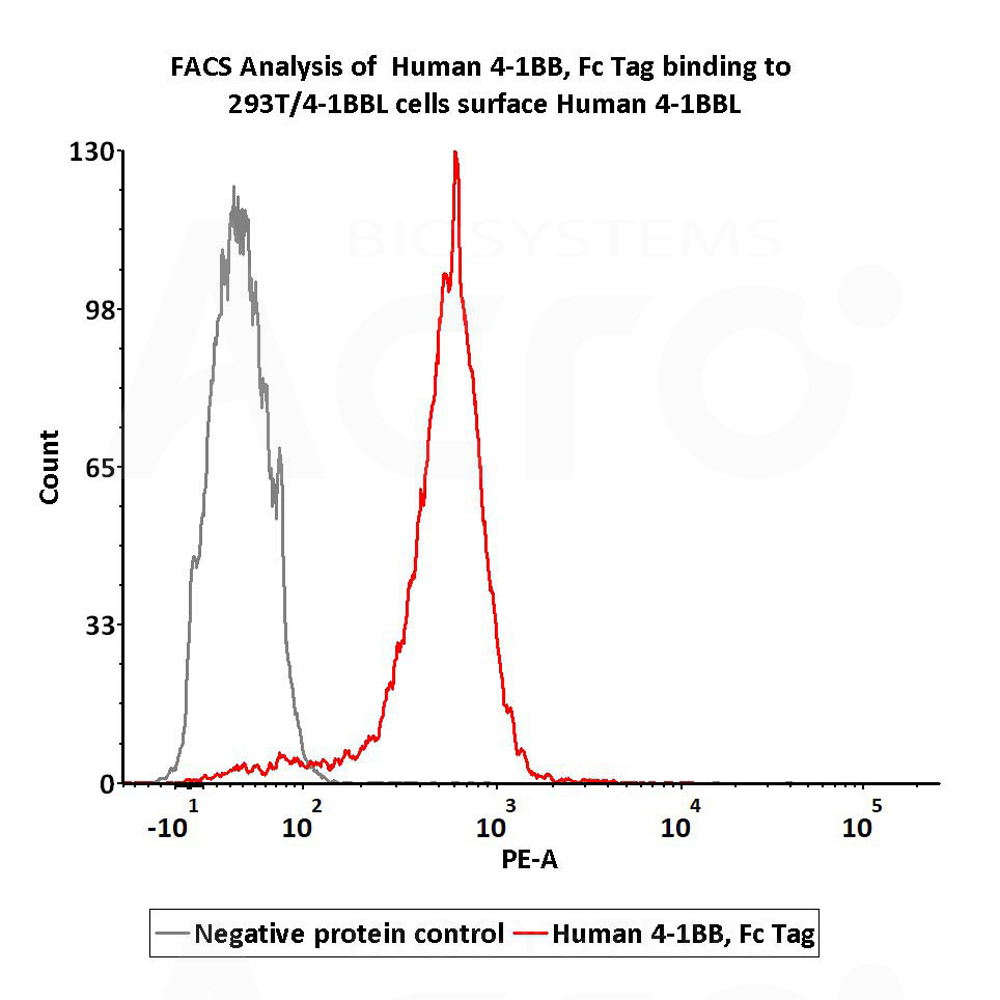
Flow Cytometry assay shows that Human 4-1BB, Fc Tag (Cat. No. 41B-H5258) can bind to 293T cells overexpressing Human 4-1BBL. The concentration of 4-1BB used is 0.1 μg/mL (Routinely tested).
Protocol
 +添加评论
+添加评论背景(Background)
4-1BB is also known as CD137, tumor necrosis factor receptor superfamily member 9 (TNFRSF9), induced by lymphocyte activation (ILA), is a co-stimulatory molecule of the tumor necrosis factor (TNF) receptor superfamily. CD137 can be expressed by activated T cells, but to a larger extent on CD8 than on CD4 T cells. In addition, CD137 expression is found on dendritic cells, follicular dendritic cells, natural killer cells, granulocytes and cells of blood vessel walls at sites of inflammation. The best characterized activity of CD137 is its costimulatory activity for activated T cells. Crosslinking of CD137 enhances T cell proliferation, IL-2 secretion survival and cytolytic activity. Further, it can enhance immune activity to eliminate tumors in mice. CD137 can enhance activation-induced T cell apoptosis when triggered by engagement of the TCR/CD3 complex. In addition, 4-1BB/4-1BBL co-stimulatory pathway has been shown to augment secondary CTL responses to several viruses, and meanwhile augment anti-tumor immunity. 4-1BB thus is a promising candidate for immunotherapy of human cancer. CD137 has been shown to interact with TRAF2.























































 膜杰作
膜杰作 Star Staining
Star Staining















